We may receive a commission when you use our affiliate links. However, this does not impact our recommendations.
After splitting my mallet log into quarters (see part one of this project by clicking here) I turned to the lathe work. I produced four different mallets, each one with its own unique handle. I turned the first and the second handles identical, then altered one of them into a hexagonal shape. I was curious to see if this handle would feel better in my hand, theorizing that because in closing a hand over the handle, we form a polygon shape (try closing your fingers on an imaginary handle and look at it, you’ll see what I mean), perhaps a hexagonal handle would fit best. Then, I turned the two remaining mallet handles, each with a different design.
And now its time to announce the winners of the mallet pageant.
The first and second place are reserved for two handles that are very much the same. The only difference between them is that one terminates with a bead. Both are shaped like a long and narrow barrel, a geometry that I find very comfortable for my hand. The beaded handle is perhaps the overall winner, because its defined terminus helps in registering the handle securely in the hand.
Third place is occupied by the zucchini-shaped handle. This handle looks very cool but because it is narrow in the middle and thicker toward its end – it doesn’t fit that well in my hand and when I swing it, I feel that I have less control over the outcome of the striking action. That said, many hammer handles are shaped this way so there must be a good reason we see these handles around.
I gave the fourth place to the hexagonal handle. Yes, in theory it sounds promising, but in reality it was the least comfortable. Perhaps further experimentation is needed. Who knows, maybe by adding a few more facets to it, it will turn into a winner.
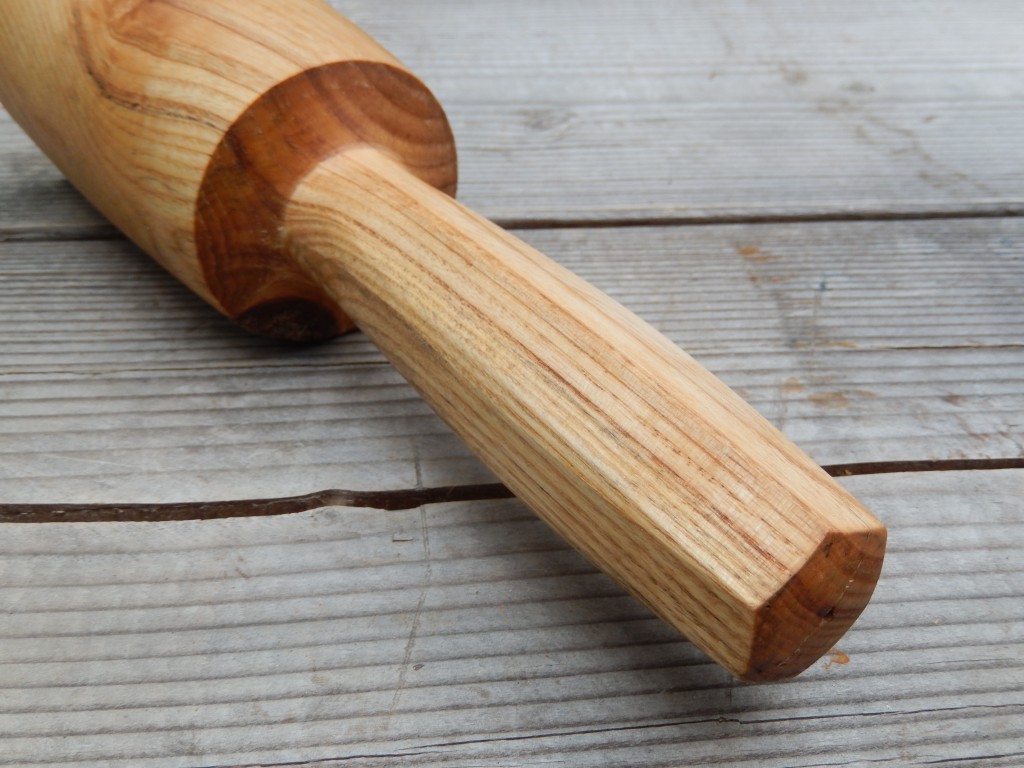
After finishing this experiment I had some time to embark on a special mallet project for my son and my nephew. Both toddlers surely would love a mallet, I thought to myself. At first they will chew on it, then they will throw and drop it before they will use it to hit everything around them. Eventually, they will discover that the mallet is the right tool to drive pegs into their peg board toy.
I encourage you to make a few mallets (or more) and see which shape fits your hands the best. At the end of the experiment, I promise you will have improved your turning skills, but more important, you’ll have a beautiful collection of impressive looking objects that, if not used by you, can at least decorate a corner of your living room or add charm to that unused shelf space over the kitchen cabinets.
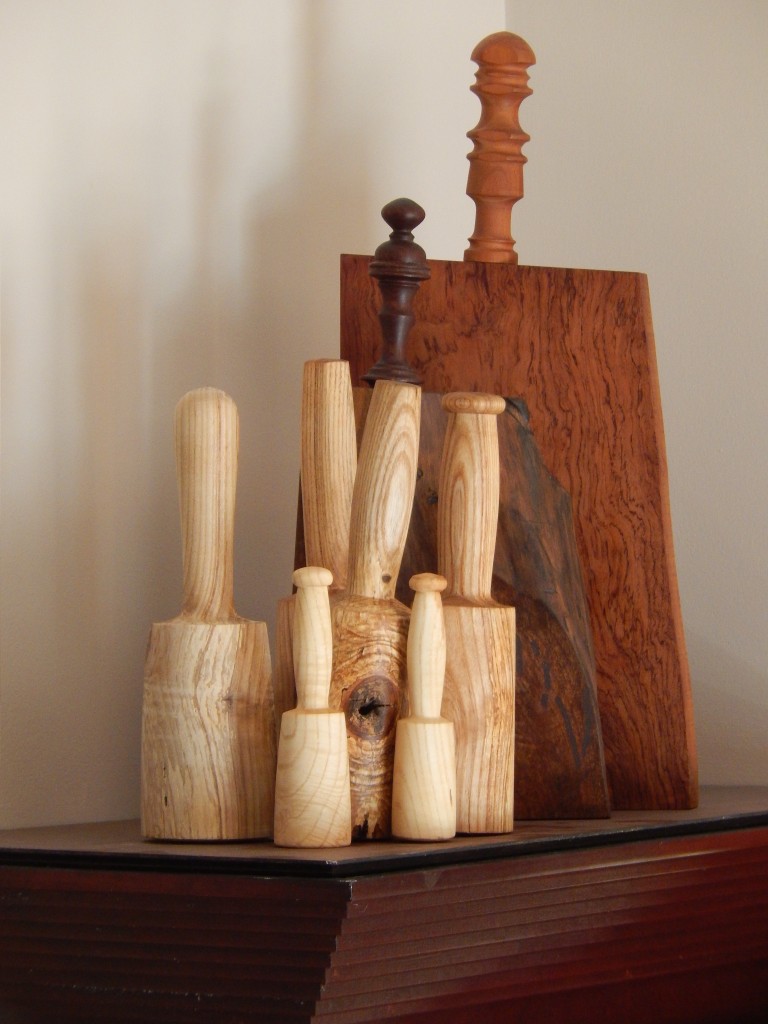
My “family” of mallets and two of my turned-handle cutting boards reside on top of our kitchen cabinets.
Here are some supplies and tools we find essential in our everyday work around the shop. We may receive a commission from sales referred by our links; however, we have carefully selected these products for their usefulness and quality.



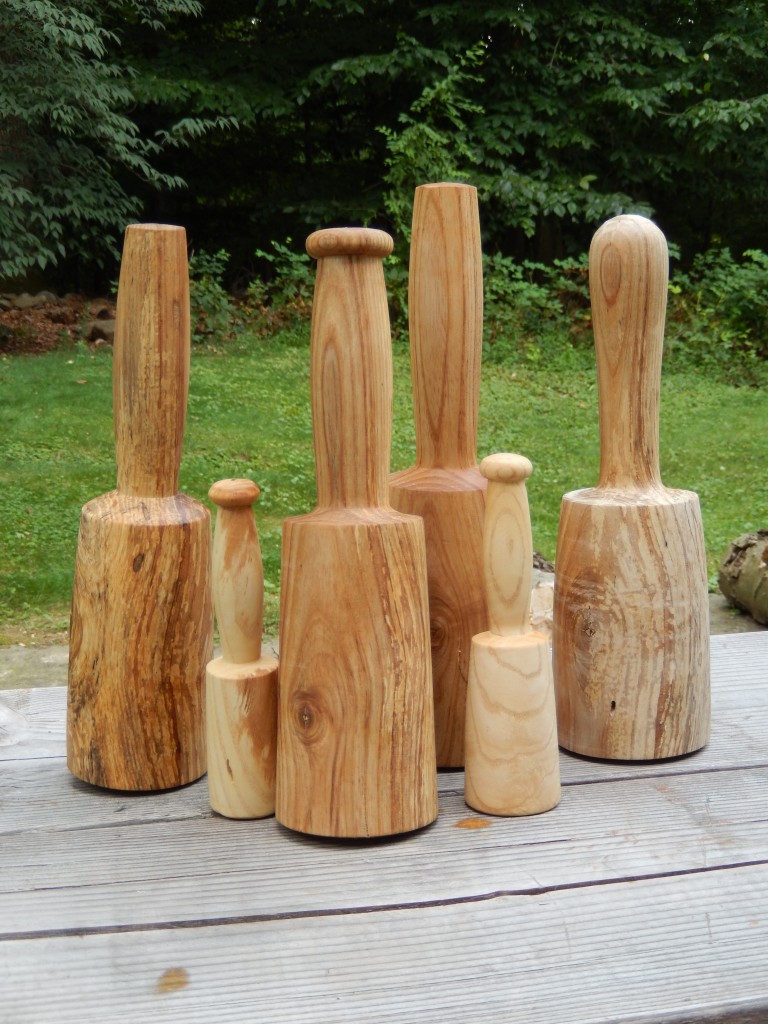
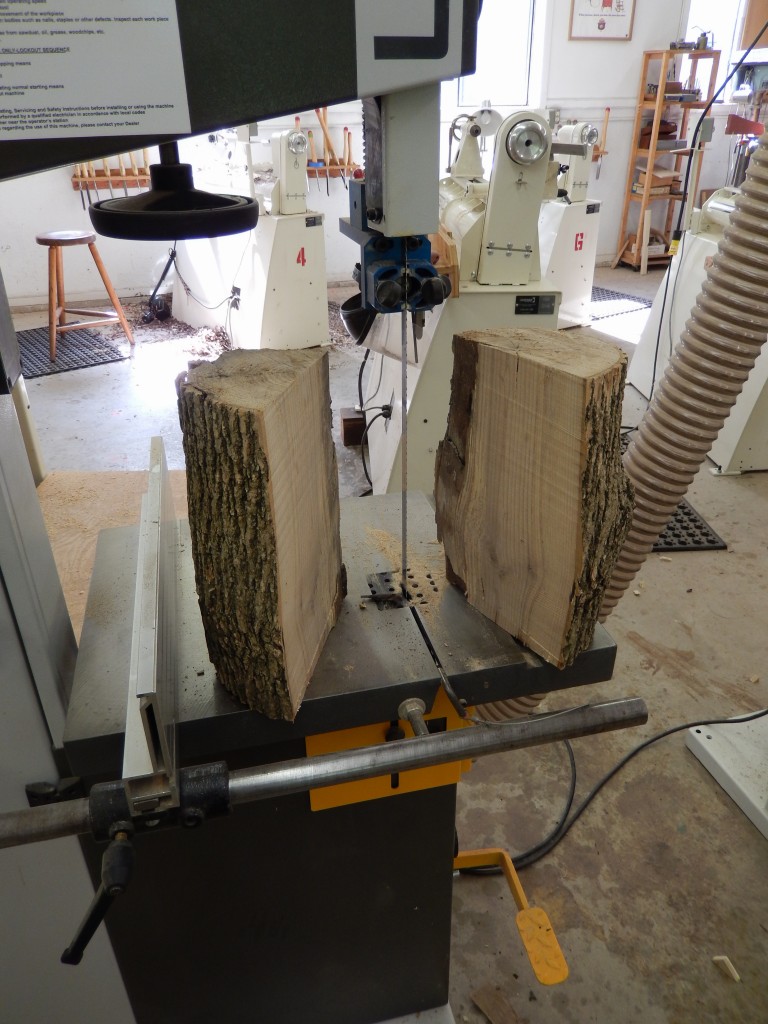
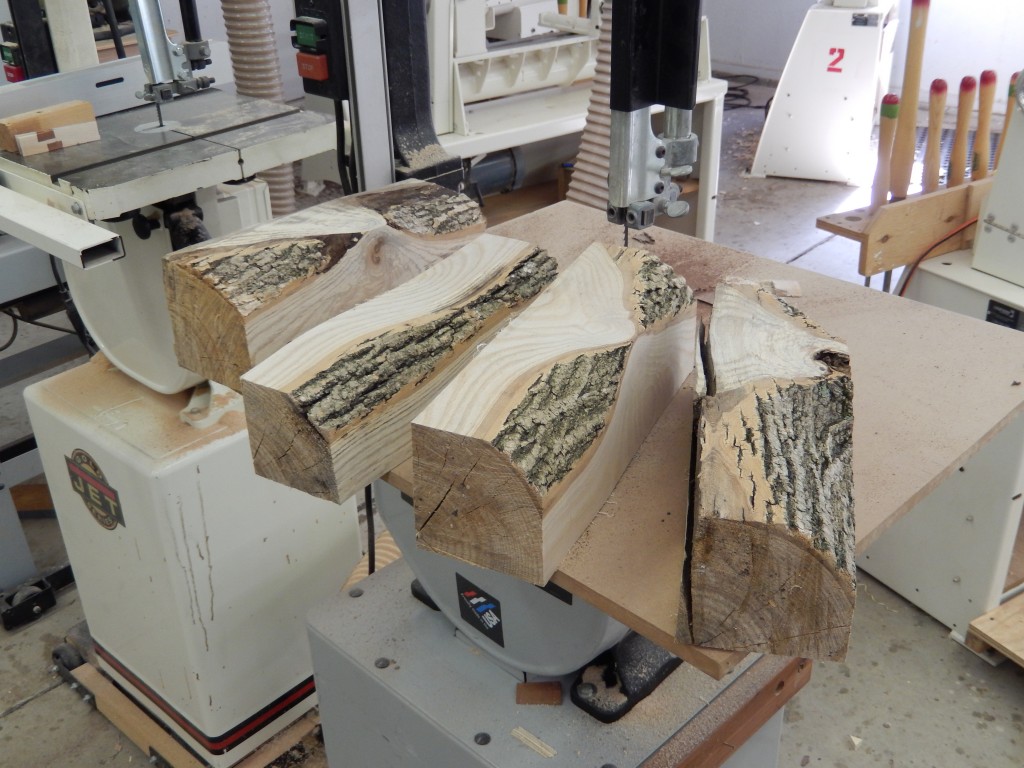
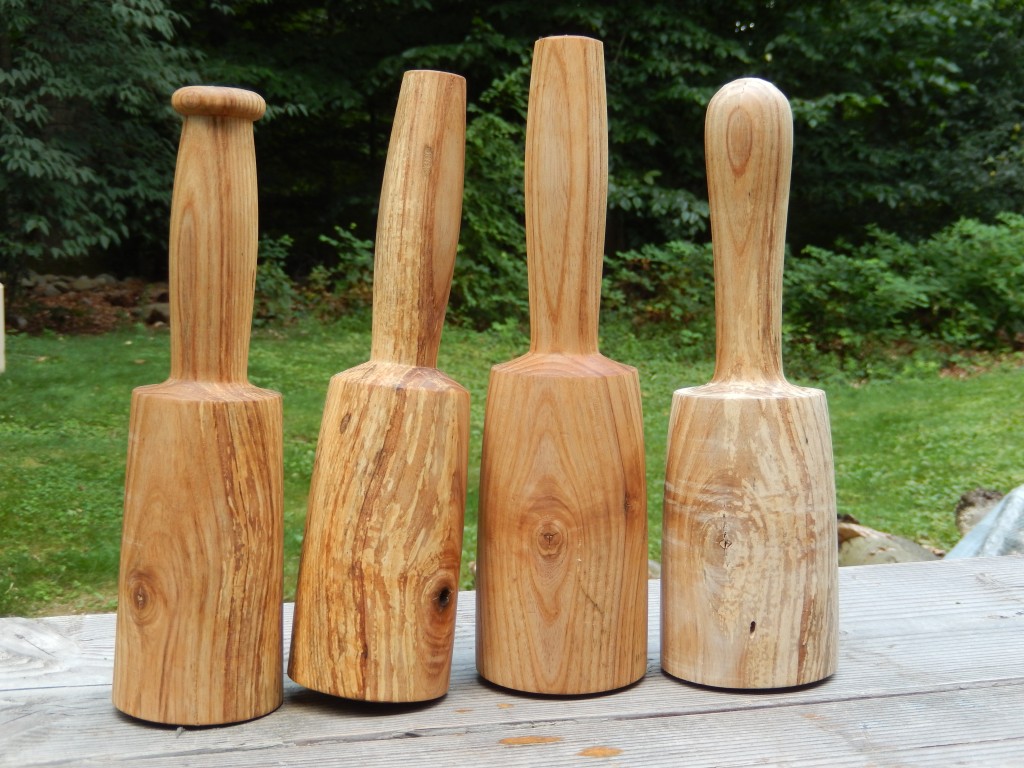
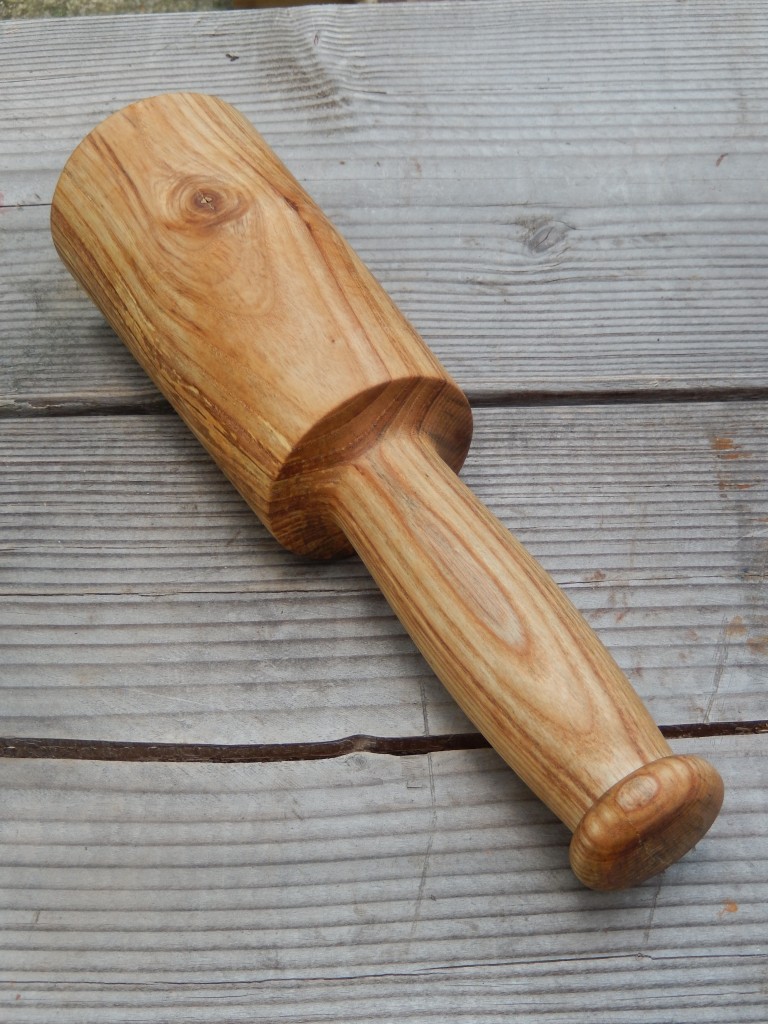
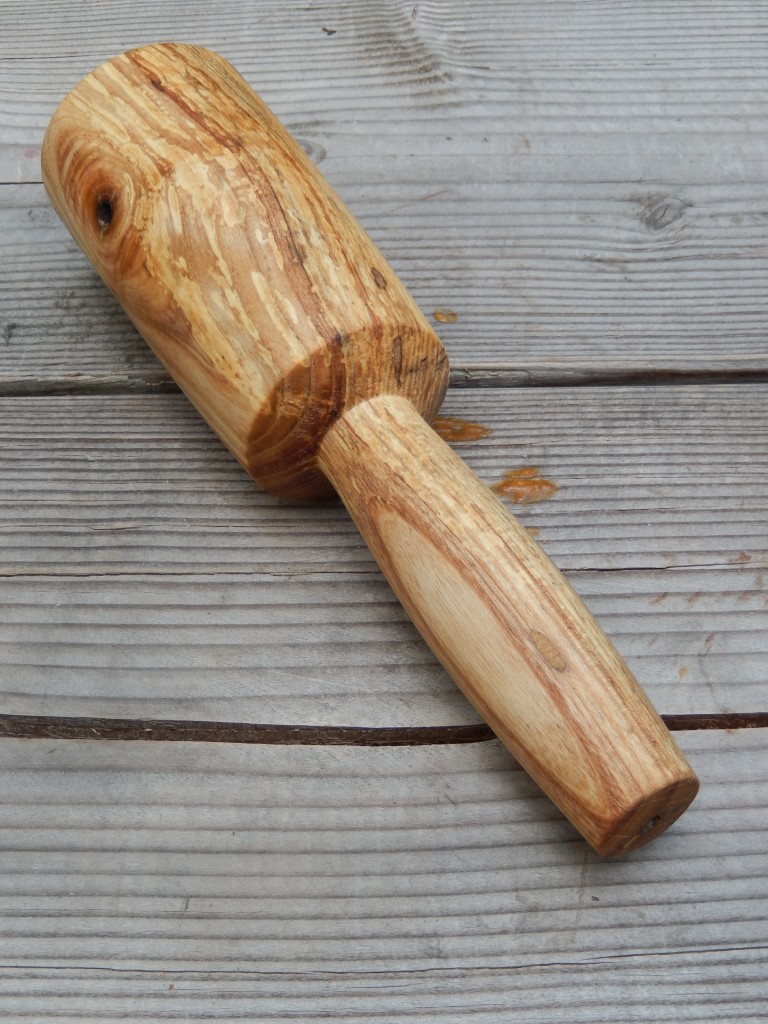
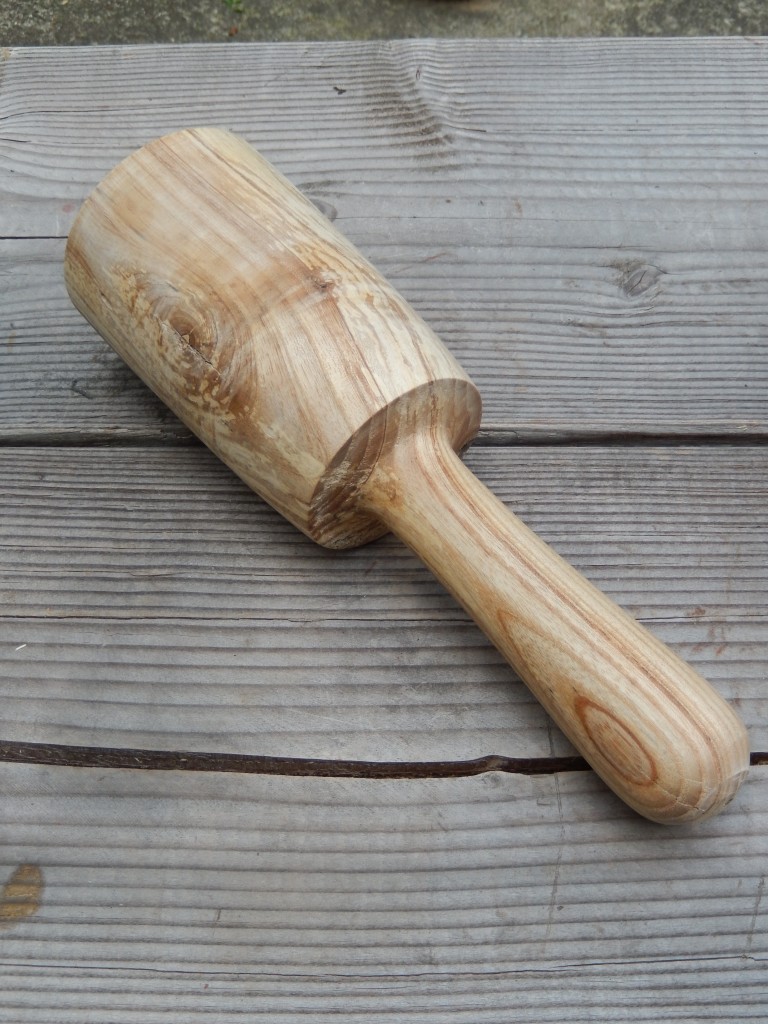
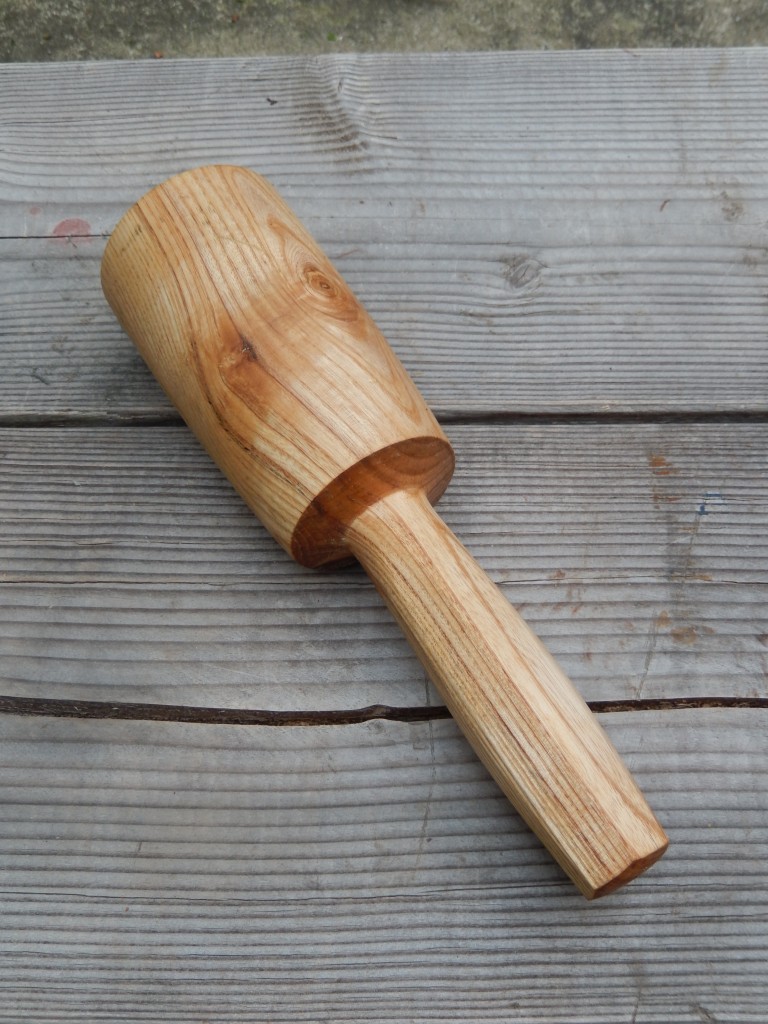
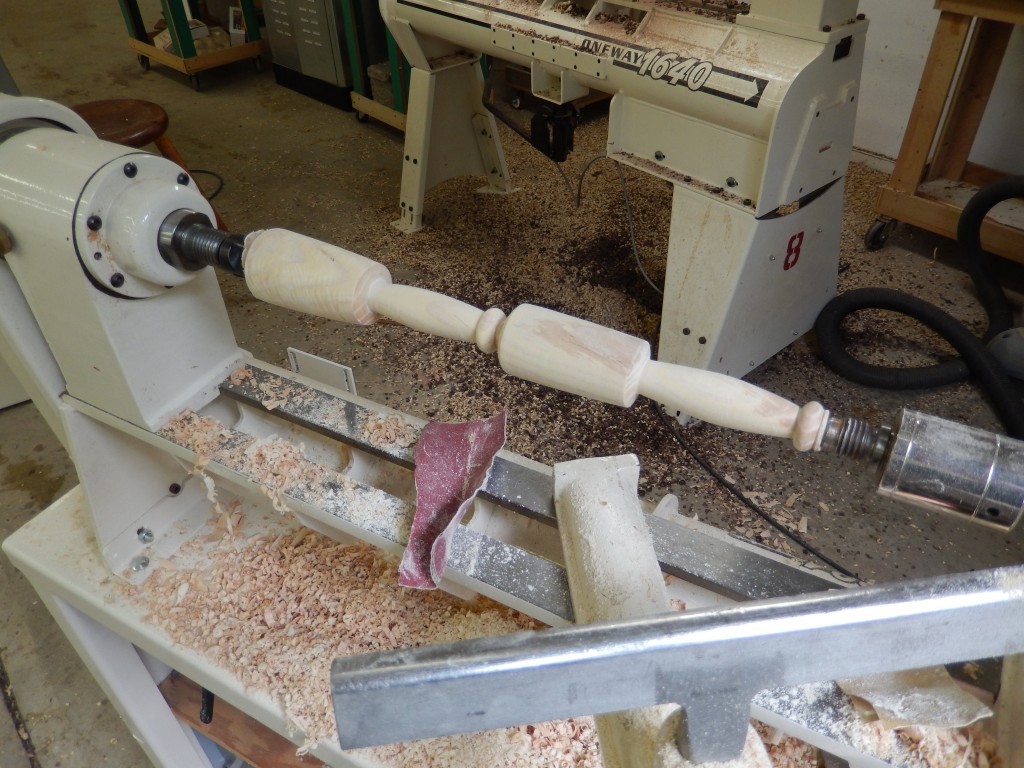






A naive question, why is ash a bad wood fora Maul/mallet head?
You mentioned that the “zucchini” handle is slimmer and you felt less control, but that style of handle seems popular for other tools. Perhaps the difference is caused by the balance of the tool and relative weight of the head of the mallet. Maybe this handle style would be better on a tool with a lighter “business end.”
Yoav
I like your show of different types of mallet which gives one thought on aspects of design.
Regarding the one with flat sides (hexagonal) this puts me in mind of the London pattern for chisel handles which, as you probably know, is based on an octagonal design. This is perhaps the answer to making a handle with flat sides as it is a very long established pattern, if somewhat rare these days.
Incidentally I see you have used a piece of timber with significant spalting, was this because you anticipated the mallets might be for trial/show purposes only?
JohnN
OK those are the verdicts for the handles. What about the head shape? Barrel? Tapered? Straight? Which do you prefer?